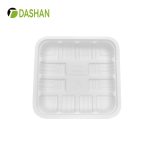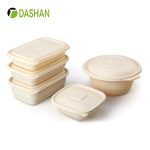Introduction
The global plastic pollution crisis has reached a critical point. In 2025, only 9% of plastic waste is recycled worldwide, according to recent studies, while billions of tons continue to accumulate in landfills and oceans. Food packaging, a major contributor to single-use plastics, stands at the crossroads of environmental responsibility and industry innovation.

Governments, NGOs, and industry leaders are rallying around new policies and cutting-edge technologies to transform food packaging from an environmental burden to a circular economy asset.
🌐 Global Policy Shifts Fuel Urgent Packaging Reforms
The European Union’s 2024 Plastics Regulation has set ambitious targets, mandating at least 30% recycled content in all plastic food packaging by 2030, alongside strict bans on non-recyclable single-use plastics. Similar regulations are emerging across North America and Asia, driven by mounting environmental activism and consumer demand.
These policies have pushed packaging manufacturers to rethink materials and supply chains radically. According to Dr. Marianne Köhler, sustainability expert at the University of Freiburg,
“Regulatory pressure combined with growing consumer awareness is the driving force for a packaging revolution that prioritizes recyclability and lifecycle impact.”
🔬 Experts Highlight the Critical Role of Material Innovation
Recent studies published in The Journal of Cleaner Production emphasize that material innovation, especially in RPET and bioplastics like PLA, is key to reducing carbon footprints and plastic waste in food packaging.
Dr. Ethan Liu, a leading packaging scientist, notes:
“While RPET uses recycled plastics to close the loop, bioplastics offer an alternative derived from renewable resources. However, each comes with trade-offs in durability, cost, and recycling infrastructure compatibility. A hybrid approach may offer the most sustainable future.”
These insights underscore the need for manufacturers to invest in R&D and supply chain collaboration, ensuring packaging is not only sustainable but also safe and practical for food applications.
📊 Industry Case Studies Demonstrate Real-World Impact
Several major food retailers and fast-food chains have publicly committed to reducing virgin plastic use by over 50% by 2030, replacing it with recycled or compostable alternatives.
For example, a leading supermarket chain in Southeast Asia reported:
-
A 25% reduction in packaging-related carbon emissions within two years of integrating RPET containers supplied by trusted manufacturers.
-
Improved consumer perception and increased sales in their fresh produce and ready-to-eat sections.
Manufacturers like Xiamen Dashan, with their extensive portfolio of RPET, PET, PLA, and PP packaging solutions, play a vital role in enabling such transitions by providing safe, customizable, and sustainable packaging designed to meet evolving regulations and market demands.

📈 Key Data Highlights
Global Plastic Recycling Rate (2025)
Recycled: 9% ████
Landfilled/Incinerated: 91% ██████████████████████████
Packaging-Related Carbon Emission Reduction Example
| Year | Emission Reduction (%) |
|---|---|
| 2022 | 0% |
| 2023 | 10% |
| 2024 | 25% |
🌿 The Consumer Lens: Demand for Transparency and Sustainability
Market research by NielsenIQ shows that 73% of global consumers are willing to pay a premium for sustainably packaged food products. Furthermore, label transparency—clear information on recyclability, material origin, and disposal methods—has become a key purchasing driver.
Packaging manufacturers and brands must therefore not only innovate materials but also focus on educational labeling and design to empower responsible consumer choices. Companies like Xiamen Dashan actively collaborate with clients to incorporate clear recyclability marks and custom branding that highlight sustainability efforts.
🔮 What’s Next: Towards a Circular and Low-Carbon Food Packaging Future
Looking ahead, experts agree on several critical developments:
-
Expansion of recycling infrastructure worldwide to support RPET and mixed materials.
-
Increased adoption of digital watermarking and smart packaging to improve sorting and recycling efficiency.
-
Development of hybrid bio-based and recycled plastics combining durability with environmental benefits.
The synergy of technology, regulation, and consumer behavior will shape a packaging ecosystem that supports both sustainability and food safety. Industry leaders like Xiamen Dashan continue to invest in R&D to stay ahead, providing packaging that aligns with these emerging trends and supports customers’ sustainability goals.

Conclusion
The challenge of food packaging waste is immense, but so is the opportunity for transformative innovation. As global policies tighten and consumer expectations evolve, the packaging industry must accelerate its pivot towards sustainable materials, smarter design, and transparent communication.
Companies that embrace these trends and invest in circular solutions will not only reduce environmental impact but also gain competitive advantage in a rapidly changing marketplace. Xiamen Dashan exemplifies such commitment, delivering high-quality, safe, and sustainable packaging solutions that help food brands close the plastic loop and meet future challenges.

References
-
Ellen MacArthur Foundation. (2023). Global Commitment 2023 Progress Report. https://ellenmacarthurfoundation.org
-
European Commission. (2024). EU Plastics Regulation & Circular Economy. https://ec.europa.eu/environment/topics/plastics_en
-
U.S. Food & Drug Administration (FDA). (2023). Food Packaging Regulations. https://www.fda.gov/food/food-ingredients-packaging/food-packaging-materials
-
The Journal of Cleaner Production. (2024). Material Innovations in Food Packaging.
-
Dr. Marianne Köhler, University of Freiburg. Interview on Packaging Policy Impact, 2025.
-
NielsenIQ. (2024). Global Consumer Sustainability Survey.
-
Smithers Pira. (2023). Global Food Packaging Market Report. https://www.smithers.com/
-
World Economic Forum. (2023). Plastic Waste Reduction and Circular Economy. https://www.weforum.org/
-
Packaging Europe. (2024). Innovations in Biodegradable and Compostable Packaging.
-
Association for Plastic Recyclers (APR). (2024). Recycled PET Guidelines. https://plasticsrecycling.org/




